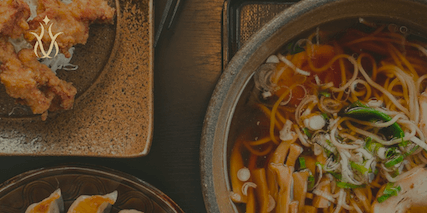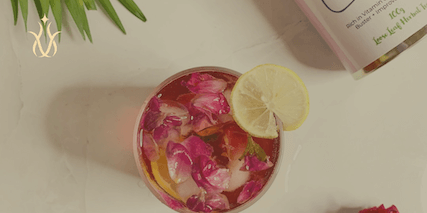The Okinawa diet is a traditional dietary pattern originating from Japan’s Okinawa region. This diet has gained significant attention due to its association with the Blue Zone, which are regions around the world known for their inhabitants’ longevity and good health. In Okinawa, Japan, people have a remarkably high life expectancy, with a large number of centenarians. This article explores the Okinawa Diet’s key components and its health benefits.
Introduction to the Okinawa Diet
Nestled in the southernmost region of Japan lies the Ryukyu Islands, with Okinawa at its heart. Known for its unique culture, beautiful coral reefs, and subtropical climate, Okinawa has something else that sets it apart: an extraordinarily high life expectancy. In this article, we will explore the origins and key aspects of the Okinawa diet, a traditional way of eating, making waves in health and longevity.
Brief History and Origin of the Okinawa Diet
The Okinawa diet wasn’t crafted in a modern nutrition lab or designed as part of a trendy health movement. Rather, it evolved naturally over centuries, influenced by a blend of Japanese and Chinese dietary traditions. Rooted in simplicity, it features a variety of plant-based foods, a moderate amount of fish, and minimal meat and dairy products. Historically, the Okinawan eating pattern has embraced seasonal and locally sourced foods, making sweet potatoes, seaweed, and green leafy vegetables the pillars of their daily meals.
Connection to the Blue Zones
When we zoom out and look at global health patterns, Okinawa holds a special status. It’s identified as one of the world’s “Blue Zones”—a term coined by Dan Buettner, which refers to regions where people live significantly longer and healthier lives than average. Okinawa finds itself in the company of a select few regions, such as Sardinia in Italy and Nicoya in Costa Rica, where centenarians aren’t just surviving—they’re thriving. So, what’s their secret? According to research, it is a mix of diet, physical activity, social engagement, and a sense of purpose, or ‘Ikigai’ in Japanese.
Life Expectancy in Okinawa, Japan
The island of Okinawa has one of the highest life expectancies in the world. For every 100,000 inhabitants, Okinawa has about 68 centenarians, which is more than three times the number found in the United States. Remarkably, these individuals aren’t just living longer; they’re living healthier, with lower rates of chronic diseases such as heart disease, cancer, and diabetes. Medical experts believe that the traditional Okinawa diet, rich in anti-inflammatory and antioxidant properties due to its plant-focused nature, is a major contributor to this impressive longevity.
Key Components of the Okinawa Diet
The Okinawa diet, often highlighted as a key to the exceptional longevity of its adherents, is more than just a menu—it’s a philosophy of life. These eating patterns, rooted deeply in Okinawan culture, emphasise not only what to eat but how to eat. Let’s unravel its key components.
Low Caloric Intake
One of the defining features of this traditional diet is the low caloric intake. Studies have shown that Okinawans consume significantly fewer calories compared to Western populations. Interestingly, this eating pattern isn’t due to a conscious effort to diet but rather a natural outcome of their traditional eating habits. Studies indicate that Okinawans, on average, consume around 1,900 calories per day, significantly lower than the typical Western intake of 2,500 to 3,000 calories. This ‘caloric restriction’ is believed to contribute to their enhanced longevity. Research has consistently shown a link between lower calorie intake, reduced incidence of chronic diseases, and extended lifespan. Caloric restriction, without malnutrition, has been found to activate certain pathways in the body that contribute to increased longevity. By consuming fewer calories, Okinawans may increase their chances of living a longer and healthier life.
Plant-Based Focus
The Okinawan traditional diet is predominantly plant-based, with a strong emphasis on root vegetables. Sweet potatoes, green leafy vegetables, and other vegetables make up a significant portion of the daily meals. Sweet potatoes, not rice, were historically the main staple in Okinawa. Rich in antioxidants and low in calories, they form the backbone of the Okinawan diet. Okinawans rarely consume animal products such as red meat. Instead, they derive protein from plant sources like tofu and legumes, which are associated with lower levels of inflammatory markers in the body. The plant-based focus of the diet provides essential nutrients, vitamins, and minerals while keeping the consumption of saturated fat low. This contributes to better overall health and reduced risk of chronic diseases.
Marine Foods
Another important aspect of the traditional Okinawa diet is the inclusion of marine foods. Okinawa, being a group of islands, naturally integrates marine foods into its diet, yet the emphasis remains on balance and moderation. Seaweed, fish, and other marine products are staples in the diet. These foods are low in saturated fats and rich in omega-3 fatty acids, which benefit cardiovascular health. Consuming fish and seaweed provides essential nutrients like iodine and antioxidants, contributing to overall well-being. The inclusion of marine foods adds variety to the diet and enhances its nutritional profile.
Minimal Dairy and Grain Consumption
Unlike Western diets, dairy products and excessive grains are notably absent in the traditional Okinawan diet. The traditional Okinawa diet includes minimal dairy products and limited quantities of grains. Historically, Okinawans didn’t consume milk, cheese, or other dairy products, which could partly account for their lower rates of heart disease and obesity. Dairy consumption is minimal, with alternatives like soy products being preferred. Grains, mostly in the form of small servings of brown rice or noodles, are present but not predominant. Whole grains are consumed sparingly, focusing on obtaining carbohydrates from sources like sweet potatoes. This approach helps maintain a balanced diet with a lower risk of obesity and chronic diseases related to high dairy and grain intake.
Fermented Foods
Rich in probiotics, fermented foods are a critical, yet often overlooked, component of the traditional Okinawa diet. Fermented foods play a significant role in the Okinawa diet and contribute to gut health. Foods like miso, tofu, and natto are commonly consumed. These fermented foods provide probiotics that promote a healthy gut microbiome. A healthy gut is essential for proper digestion, nutrient absorption, and immune function. The consumption of fermented foods in the Okinawa Diet helps maintain a healthy gut, reducing the risk of digestive disorders and improving overall health.
https://youtu.be/7dnsJegY1ZA?si=g83WnpLoT-p-9OYw
Health Benefits of the Okinawa Diet
Beyond the vibrant, fresh foods on the plates of the Okinawans lies the true essence of their diet: remarkable, science-backed health benefits. From an incredibly low rate of heart disease to an unusually high percentage of centenarians, Okinawa seems to be doing something right. Let’s delve into the evidence.
Cardiovascular Health
Okinawa boasts one of the lowest rates of heart disease globally. Statistically, these islanders have significantly lower cholesterol levels, blood pressure, and rates of coronary artery disease compared to people in Western countries. The Okinawa eating style has been associated with this low rate of cardiovascular disease in Okinawa. The low intake of saturated fat, as well as the emphasis on plant-based foods and marine products, contribute to better cardiovascular health. Studies have shown that Okinawan foods can help reduce cholesterol levels, lower blood pressure, and improve overall heart function. By following this diet, individuals can decrease their risk of developing heart disease and promote a healthier heart.
Weight Management
The Okinawa diet has been linked to lower rates of obesity in the region. This archipelago holds a strikingly lower obesity rate compared to Western populations. Remarkably, more than 95% of the Okinawan population has a healthy body weight. The combination of low caloric and fat intake and a plant-based focus helps individuals maintain a healthy weight. The emphasis on nutrient-dense foods and the avoidance of processed foods and refined grains contribute to satiety and reduce the risk of overeating. The Okinawa diet promotes a balanced approach to weight management and can be an effective strategy for those looking to lose weight or maintain a healthy BMI.
Cancer Prevention
Statistically speaking, Okinawa has significantly lower rates of common cancers, such as breast cancer, prostate cancer, and colon cancer, when compared to Western nations. This can be attributed, in part, to the traditional Okinawa diet. The consumption of antioxidant-rich foods like root vegetables and marine products, along with the anti-inflammatory properties of Okinawan foods, helps reduce the risk of cancer. The Okinawa diet provides a wide range of vitamins, minerals, and phytochemicals that have been shown to have protective effects against various types of cancer. By adopting this diet, individuals can potentially reduce their risk of developing cancer.
Longevity and Anti-Aging
Okinawa is renowned for its high percentage of centenarians. The traditional Okinawa diet, with its focus on low caloric intake, plant-based foods, and healthy lifestyle factors, is believed to contribute to longevity and anti-aging effects. Research has shown that Okinawans have longer telomeres, which are protective caps on the end of chromosomes. Longer telomeres are associated with slower aging, reduced inflammation, and lower risk of chronic diseases, offering a tantalising biological clue to Okinawans’ longevity. The combination of the Okinawa Diet and other lifestyle factors may help slow down the aging process and increase healthspan.
Cultural and Lifestyle Factors
Ikigai – The Sense of Purpose
Ikigai, meaning “a reason for being,” is an important concept in Okinawan culture. Having a sense of purpose and a reason to wake up every day has been linked to increased longevity. In Okinawa, people don’t “retire” in the way the Western world understands it. Instead, they maintain a sense of purpose—a clear role in the community—that keeps them active and engaged throughout their lives. Research consistently indicates a strong correlation between having a sense of purpose in life and living longer. Studies have shown that individuals with a high sense of purpose have lower mortality rates and are less likely to develop chronic conditions, aligning with the observed health of the Okinawans. The Okinawan emphasis on finding and nurturing one’s ikigai contributes to their overall well-being and longevity.
Exercise and Physical Activity
Traditional physical activities play a significant role in the Okinawan lifestyle. Whether it’s Tai Chi, a form of martial arts that emphasises balance and meditation, or gardening, which serves as both exercise and a source of fresh produce, physical activity is woven seamlessly into their daily lives. Regular exercise helps maintain a healthy weight, improves cardiovascular health, and enhances overall well-being. The combination of a balanced diet and regular physical activity contributes to the overall health and longevity of Okinawans.
Strong Social Connections
Okinawans are known for their tight-knit communities and close social ties. They often form local support groups known as ‘Moai,’ where they gather for social, emotional, and even financial support. Okinawa’s strong sense of community and social connections are believed to play a crucial role in the health and longevity of its residents. Evidence has shown that such strong social connections are associated with lower stress levels, reduced risk of chronic disease, and, ultimately, a longer, healthier life. Okinawans value strong relationships and prioritize social interactions, which has a positive impact on their longevity and quality of life.
Adapting the Okinawa Diet in a Western Context
It’s possible to incorporate the core principles of this longevity-boosting diet no matter where we live.
- Tips for Incorporating Aspects of the Okinawa Diet into Daily Life: Start small: focus on eating more vegetables, particularly sweet potatoes and leafy greens. Opt for fish over red meat, and integrate more legumes and whole grains into meals. Use herbs and spices, like turmeric, for added flavour instead of salt.
- Example Meal Plans Breakfast could be a bowl of oat porridge topped with berries and a sprinkle of nuts. For lunch, a vibrant salad with leafy greens, tofu, and a side of steamed sweet potato. Dinner might be grilled fish with a side of stir-fried vegetables and brown rice. Snacks? Think fruit, nuts, or seaweed crisps.
Embarking on a significant diet change isn’t a decision to take lightly.
- The Importance of Individualised Advice and Monitoring Before making substantial changes to your diet, it is essential to consult with a healthcare professional. They can provide advice that is tailored to your specific health circumstances, monitor your progress, and help you make sustainable and safe choices.
Conclusion
In our exploration of the Okinawa diet, we’ve unearthed a truly fascinating approach to nutrition. One that doesn’t just promise a slender waistline but whispers the profound secret of a longer, healthier life. This isn’t a fleeting trend but a lifestyle — one that has withstood the test of time in the heart of Okinawa, Japan.
At its core, the Okinawa diet is largely plant-based, low in calories, and rich in antioxidants, which the evidence suggests plays a significant role in the residents of Okinawa enjoying some of the world’s highest life expectancies. The diet’s low saturated fat content correlates with the impressively low levels of heart disease seen in Okinawa. Moreover, lower rates of certain types of cancers in Okinawa have been associated with following the Okinawa diet, thanks to its focus on anti-inflammatory, antioxidant-rich foods. Add to that a propensity for weight management, courtesy of its low caloric intake and nutrient-rich food choices.
But this is more than just a list of foods; it’s an invitation to a different way of living and eating. It beckons you to savour not just your meals but your life. It’s a tantalizing prospect, isn’t it? A life led with more energy, more years, and more vibrancy.
Frequently Asked Questions
What is the Okinawa diet?
The Okinawa diet refers to the traditional dietary habits of the people living in the Okinawa Islands of Japan. Okinawa is known for its exceptional number of centenarians (people who live to be 100 years old or older) and for its residents’ generally high health and longevity. Researchers have been intrigued by this phenomenon and have identified the local diet as one of the key factors contributing to this longevity.
The Okinawa diet is not just about the food one eats but also about a holistic approach to health that encompasses mental well-being, physical activity, and strong social connections. It is this comprehensive approach to life and health that many believe contributes significantly to the longevity and vitality of the Okinawan people. The Okinawa diet emphasizes:
1. Plant-Dominant Diet
2. Low-calorie, Nutrient-Rich Foods
3. Limited Meat and Dairy
4. Rich in Healthy Fats with high Antioxidant Intake
5. Low in Refined Sugars and Grains
6. Medicinal Herbs and Spices
8. Minimal Alcohol Consumption
9. Social and Mindful Eating
10. Harmony with Nature
Why do Okinawans live so long?
The remarkable longevity of the Okinawan people, which includes a higher proportion of centenarians (people living to 100 or beyond) compared to most other populations, has intrigued researchers for decades. The reasons for their extended lifespan are multi-faceted and interwoven, reflecting a harmonious blend of food culture, lifestyle, environment, and cultural practices. Their lifestyle as a whole, rather than any one specific factor, seems to be the secret to their exceptional longevity and health.
Here is a unique exploration of the key factors contributing to the longevity of Okinawans:
1. Nutrient-Rich Diet:
- The traditional Okinawa diet is predominantly plant-based, low in calories but high in nutrients. It includes a wealth of root vegetables, particularly sweet potato, legumes, whole grains, and a moderate amount of fish and lean meats. This diet is low in refined sugars and fats, contributing to lower rates of heart disease, cancer, and obesity.
2. Caloric Restriction:
- Okinawans practice a cultural habit known as ‘Hara Hachi Bu,’ which translates to eating until one is 80% full. This form of mild caloric restriction without malnutrition is believed to contribute to their extended lifespan.
3. Active Lifestyle:
- Okinawans traditionally engage in regular, moderate physical activity, such as gardening, farming, and fishing, which keeps them physically active into old age without overly intense exercise that might lead to injury.
4. Strong Social Connections:
- The Okinawan culture values close-knit, supportive relationships, often formalized through ‘moai,’ or social support networks. These lifelong social bonds are believed to contribute to lower stress levels and overall life satisfaction.
5. Purposeful Living (Ikigai):
- Okinawans often refer to their sense of purpose as ‘Ikigai,’ which means ‘a reason for being.’ This deeply rooted sense of purpose in life is thought to contribute to mental well-being and longevity.
6. Stress Management:
- The Okinawan lifestyle emphasizes a harmonious, relaxed approach to life, with less emphasis on rigid schedules and a greater emphasis on community and enjoyment of life, contributing to lower stress levels.
7. Medicinal Plants and Herbs:
- The traditional Okinawa diet includes a variety of herbs and spices, like turmeric and mugwort, which are believed to have anti-inflammatory and health-promoting properties.
8. Healthy Aging:
- Okinawans not only live longer but tend to age more healthily, with lower rates of cardiovascular disease and other chronic diseases. This ‘compression of morbidity’ means they spend fewer years of their life in poor health, which is associated with a variety of lifestyle factors, including diet and physical activity.
9. Genes:
- While lifestyle is a critical factor, genetics may also play a role. Researchers have been studying the genetic makeup of Okinawans to identify any genetic factors that may contribute to their longevity.
10. Environmental Factors:
- Okinawa’s subtropical climate allows for year-round outdoor activity and provides a bounty of fresh, locally grown foods. Clean air and water also likely play a role in the inhabitants’ longevity.
11. Low Smoking Rates:
- Historically, Okinawa has had relatively low smoking rates, especially among women. This significantly reduces the risk of tobacco-related diseases.
What do Okinawans eat?
The traditional Okinawa diet is known for its focus on plant-based, nutrient-rich foods, and its unique aspects have garnered worldwide attention due to the longevity and health of the Okinawan people.
This diet, rich in plant-based, anti-inflammatory foods and low in processed and calorie-dense foods, is believed to be a significant factor in the health and longevity of the Okinawan people.
Here is a unique, detailed list of the foods that are traditionally consumed in Okinawa:
1. Sweet Potatoes:
- A staple in the Okinawa diet, particularly the purple sweet potato, known as “Beni-imo”. Sweet potatoes are rich in vitamins, antioxidants, and fibre. They were historically the primary source of carbohydrates for Okinawans.
2. Vegetables:
- Okinawans consume a variety of colourful and nutrient-dense vegetables. Green and yellow vegetables are a particular feature. Examples include bitter melon (Goya), hechima (a type of gourd), handama (Okinawan spinach), and nabana (a type of mustard green).
3. Seaweeds:
- Seaweeds are a key component, with types like kombu and mozuku being regularly consumed. They are rich in minerals and known for their anti-inflammatory properties.
4. Legumes:
- Soy-based products like tofu, miso, and edamame are central to the Okinawan diet. These are good sources of protein and are rich in isoflavones, which have various health benefits.
5. Fish:
- Fish is consumed several times a week, providing a rich source of omega-3 fatty acids. Common types of fish include small local fish, seaweed-eating fish, and shellfish.
6. Pork:
- Though consumed less frequently than vegetables and fish, pork holds a special place in Okinawan cuisine. It is typically eaten in moderation and often stewed or used as a flavouring. The entire pig is used, minimizing waste.
7. Whole Grains:
- While not as dominant as sweet potatoes, whole grains like brown rice and millet are part of the diet. They are consumed less frequently than in mainland Japan.
8. Herbal Teas:
- Okinawans are known to drink various herbal teas, including jasmine tea and sanpin-cha (a blend of jasmine and green tea). Turmeric tea, which is believed to have anti-inflammatory properties, is also popular.
9. Medicinal Plants and Herbs:
- Turmeric and mugwort are examples of herbs that are often incorporated into meals or consumed as teas due to their believed health benefits.
10. Seasonings:
- Traditional seasonings include soy sauce, miso, and a variety of local herbs and spices. These are used to flavour foods without relying heavily on salts.
11. Fruits:
- Fruits, such as papaya, mango, and pineapple, are consumed fresh and are a significant source of antioxidants and vitamins.
12. Limited Sweets and Dairy:
- Traditionally, Okinawans did not consume a lot of dairy products or refined sugars. When sweets are consumed, they are often made from natural ingredients like sweet potatoes or fruits.
13. Moderate Alcohol:
- Some Okinawans drink alcohol in moderation, often in the form of Awamori, a traditional Okinawan distilled spirit made from long-grain rice.
What do Okinawans eat for breakfast?
Traditional Okinawan breakfasts are quite different from typical Western breakfasts. They are usually simple, light, and nutritious, reflecting the broader principles of the Okinawa diet, which is high in plant-based foods, rich in antioxidants, and low in calories and refined grains.
This breakfast is designed to be balanced and filling without being calorie-heavy. It encompasses various textures and flavours, from the savoury umami of miso soup to the bitterness of goya and the sweetness of fresh fruit. The emphasis is on whole, minimally processed foods that provide sustained energy and a wealth of nutrients to start the day.
Here is a unique description of what a traditional Okinawan breakfast might include:
1. Miso Soup:
- Miso soup is a common start to the day in Okinawa. It might contain soy foods such as tofu and seaweed and vegetables such as daikon radish, carrots, and green onions. It is rich in probiotics and is believed to aid digestion.
2. Goya Champuru:
- A classic Okinawan stir-fry dish that might be eaten at breakfast. It includes goya (bitter melon), tofu, and sometimes a small amount of pork or egg. Goya is known for its health benefits, including blood sugar regulation.
3. Steamed Sweet Potato:
- Purple sweet potatoes, or “Beni-imo”, are a staple of the Okinawan diet. For breakfast, they might be simply steamed and eaten as is or made into porridge.
4. Rice or Millet:
- A small serving of steamed brown rice or millet might be included. It is worth noting that, historically, rice was less central to the Okinawan diet compared to other parts of Japan.
5. Pickled Vegetables:
- Known as “tsukemono”, these pickled vegetables, such as daikon radish or carrots, are a common side dish. They are flavorful and are thought to aid in digestion.
6. Fresh Seasonal Fruits:
- Papaya, pineapple, or other tropical fruits might be consumed fresh. They provide a sweet taste without added sugars.
7. Herbal Tea:
- Okinawans often drink green tea, jasmine tea, or turmeric tea in the morning. These teas are rich in antioxidants and are typically consumed without added sugars or dairy.
8. Tofuyo:
- This is a type of fermented tofu seasoned with awamori (Okinawan liquor), red koji mould, and other ingredients. It is intense in flavour and eaten in small amounts, often as a side dish.
9. Seaweed Salad:
- A mixture of different seaweeds, often seasoned with a light dressing made of soy sauce, vinegar, and sesame oil. Seaweeds are a rich source of minerals and have anti-inflammatory properties.
10. Small Fish:
- Occasionally, small, local fish that are rich in omega-3 fatty acids might be part of an Okinawan breakfast. They are often grilled or cooked with minimal seasoning.
Resources:
Pes GM et al (2022). Diet and longevity in the Blue Zones: A set-and-forget issue?
Miyagi S et al (2003). Longevity and diet in Okinawa, Japan: the past, present and future.
Willcox DC et al (2009). The Okinawan diet: health implications of a low-calorie, nutrient-dense, antioxidant-rich dietary pattern low in glycemic load.
Willcox DC et al (2014). Healthy aging diets other than the Mediterranean: a focus on the Okinawan diet.
Gavrilova NS, Gavrilov LA (2012). Comments on dietary restriction, Okinawa diet and longevity.
Disclaimer: This article is for informational purposes only and should not replace professional medical advice. If you have specific concerns or medical conditions, it is recommended to consult with a healthcare professional for personalised guidance and support.
Related Topics:
The Ultimate Guide to Matcha Tea
A Deep Dive into the Best Green Tea Brands
The Incredible Health Benefits of Kombucha






